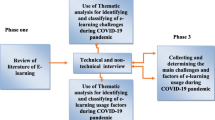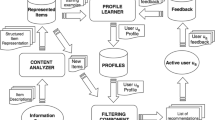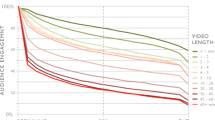Abstract
The advanced information technologies have made it possible for individuals to carry out cooperative learning efficiently and effectively from anywhere and at any time. To capitalize on the individual need and address the issues associated with the late entry into the e-learning area, it has great significance to study the service mechanism of CSCL on e-learning service and e-learning service computing modeling. This paper proposes an e-learning service model supporting for the life-cycle process management. The proposed model is developed by considering the learner’s behaviours during e-learning services, the scheduling policies, and the monitoring mechanism of learning activities. Business process modeling for e-learning services can be taken according to the study ordering of the knowledge points by using workflow modeling technology and process enactment mechanism. The overall life-cycle process management of knowledge is addressed by combining knowledge product modeling, knowledge resource modeling, and credit polices for member selection in research team by considering trust value of learners, advisers and providers in e-learning services. The proposed method can be used for supporting the sustainable development of e-learning services from planning and design, organizing e-learning process, maintenance of the e-learning process, to process improvement, as well as to support learners and advisers to effectively complete innovative team study and complex computation study. Lastly, an extended topic map tool has been developed by adding a knowledge requirement level and an information extraction tool to validate the proposed methodology. These tools can used to guide learners to concentrate on the required knowledge topics and drive knowledge providers to redevelop outdated knowledge hierarchy.









Similar content being viewed by others
References
Addison YS, Su S (2010) A web 2.0-based collaborative annotation system for enhancing knowledge sharing in collaborative learning environments. Comput Educ 55:752–766
Agrawal R, Srikant R (1994). Fast algorithm for mining association rules in large databases, VLDB, pp 487–499
Alptekin SE, Karsak EE (2011) An integrated decision framework for evaluating and selecting e-learning products. Appl Soft Comput 11:2990–2998
Alvarez M, Pan A, Raposo J et al (2008) Extracting list of data records from semi-structured web papges. Data Knowl Eng 64(2):491–509
Chang CH, Kayed M (2006) A survey of web information extraction systems. IEEE Trans Knowl Data Eng 18(10):1411–1428
Chen H, Yu C (2007) E-homebook system: a web-based interactive education interface. Comput Educ 49:160–175
Cukusic M, Alfirevic N (2010) e-Learning process management and the e-learning performance: results of a European empirical study. Comput Educ 55:554–565
Deming WE (1986) Out of the crisis. Massachusetts Institute of Technology, Center for Advanced Engineering Study, Cambridge
Dicheva D, Dichev C (2004). Education topic maps. In: 3rd international semantic web conference (ISWC’2004) poster abstracts, Hiroshima, pp 19–20
Duan L, Xu L (2012) Business intelligence for enterprise systems: a survey. IEEE Trans Industr Inf 8(3):679–687
Falakmasir MH, Habibi J (2010). Using educational data mining methods to study the impact of virtual classroom in e-learning. In: 3rd international conference on educational data mining, Pittsburgh, pp 241–248
Gan Y, Tao Z (2006) e-Learning, knowledge management and virtual learning community. Audio Visual Educ Res 1:18–22
Garrido A, Fernández S (2012) On the automatic compilation of e-learning models to planning. Knowl Eng Rev 2012:1–16
He W, Xu L, Means T, Wang P (2009) Integrating web 2.0 with the case-based reasoning cycle: a systems approach. Syst Res Behav Sci 26(6):717–728
He W, Yan G, Xu L (2014) Developing vehicular data cloud services in the IoT environment. IEEE Trans Industr Inf 10(2):1587–1595
Hemant K, Bhargava (2014) Platform technologies and network goods: insights on product launch and management. Inf Technol Manag 15(3):199–209
Hoyland C, Adams K, Tolk A, Xu L (2014) The RQ-Tech methodology: a new paradigm for conceptualizing strategic enterprise architectures. J Manag Anal 1(4):55–77
Hu S (2007) Automatic control principle. Chinese Science Press, Beijing
Huang C, Liu M (2007) An intelligent learning diagnosis system for Web-based thematic learning platform. Comput Educ 2007(48):658–679
Hunting S, Park J (2002) XML topic maps: creating and using topic maps for the web. Addison-Wesley Professional, Boston
Hussein D, Alaa G (2011) Web 2.0 based service-oriented e-learning systems: recurrent design and architectural patterns. In: 2010 11th ACIS international conference on software engineering artificial intelligence networking and parallel/distributed computing (SNPD), pp 227–234
Isabel NC, Laura VC (2013) E-learning and face to face mixed methodology: evaluating effectiveness of e-learning and perceived satisfaction for a microeconomic course using the Moodle platform. Comput Hum Behav 29:410–415
Janssen J, Erkens G (2007) Visualization of participation: does it contribute to successful computer-supported collaborative learning? Comput Educ 2007(49):1037–1065
Jiang L, Liu J, Zheng QH (2009) ETM toolkit: a development tool based on extended topic map. In: 13th international conference on computer supported cooperative work in design, Santiago
Kao F, Hsieh H (2012) Analysis of brainwave characteristics for playing heterogeneous computer games. In: Transactions on edutainment VIII, lecture notes in computer science, vol 7220, pp 1–11
Lam MI, Gong Z (2005) Web information extraction. IEEE International Conference on Information Acquisition, Hong Kong
Li S, Xu L, Wang X, Wang J (2012) Integration of hybrid wireless networks in cloud services oriented enterprise information systems. Enterp Inf Syst 6(2):165–187
Li Y, Cao B, Xu L, Yin J (2014) An efficient recommendation method for improving business process modeling. IEEE Trans Industr Inf 10(1):502–513
Li X, Wu X (2012) Modification of the traditional e-learning system based on the concept of e-learning2.0. Comput Sci 39(138–140):161
Lin L, Atkinson RK (2011) Using animations and visual cueing to support learning of scientific concepts and processes. Comput Educ 56:650–658
Lin K (2011) e-Learning continuance intention: moderating effects of user e-learning experience. Comput Educ 56:515–526
Ma N, Yu S (2010) The process assessment and capability maturity model for educational informationization of schools. J Distance Educ 1:13–17
Özyurt Ö, Özyurt H (2013) Integration into mathematics classrooms of an adaptive and intelligent individualized e-learning environment: implementation and evaluation of UZWEBMAT. Comput Hum Behav 29:726–738
Durusau P, Newcomb S, Barta R (2007) The topic maps reference model. http://www.isotopicmaps.org/tmrm/
Smith PA, McLaughlin M (2004) Knowledge management: people are important. J Knowl Manage Pract 5(1):2–7
Poelmans S, Reijers HA, Recker J (2013) Investigating the success of operational business process management systems. Inf Technol Manag 14(4):295–314
Tan W, Yang F (2008) An e-learning system engineering ontology model on the semantic web for integration and communication. In: International conference on web-based learning, lecture notes in computer science, vol 5145. Springer, New York, pp 446–456
Tan W, Shen W, Xu L et al (2008) A business process intelligence system for enterprise process performance management. IEEE Trans Syst Man Cybern Part C Appl Rev 38(6):745–756
Tao F, Cheng Y, Xu L, Zhang L (2014) CCIoT-CMfg: cloud computing and internet of things based cloud manufacturing service system. IEEE Trans Industr Inf 10(2):1435–1442
Tao F, Zuo Y, Xu L, Zhang L (2014) IoT based intelligent perception and access of manufacturing resource towards cloud manufacturing. IEEE Trans Industr Inf 10(2):1547–1557
Wang C, Bi Z, Xu L (2014) IoT and cloud computing in automation of assembly modeling systems. IEEE Trans Industr Inf 10(2):1426–1434
Wang S, Li L, Wang K (2012) e-Business systems integration: a systems perspective. Inf Technol Manage 13(4):233–249
Xu L (2011) Enterprise systems: state-of-the-art and future trends. IEEE Trans Industr Inf 7(4):630–640
Xu L (2013) Introduction: systems science in industrial sectors. Syst Res Behav Sci 30(3):211–213
Xu L (2014) Enterprise integration and information architecture. CRC Press, New York
Xu L, Tan W et al (2008) An approach to enterprise process dynamic modeling supporting enterprise process evolution. Inf Syst Front 10:611–624
Xu L, Liu H, Wang S, Wang K (2009) Modeling and analysis techniques for cross-organizational workflow systems. Syst Res Behav Sci 26(3):367–389
Yang Z, Liu Q (2007) Research and development of web-based virtual online classroom. Comput Educ 48:171–184
Zhang D, Nunamaker JF (2003) Powering e-learning in the new millennium: an overview of e-learning and enabling technology. Inf Syst Front 5(2):207–218
Zhang L, Wang H, Cao X et al (2012) Knowledge management component in managing human resources for enterprises. Inf Technol Manage 13(4):341–349
Zhang Y, Li Z, Xu L, Wang J (2011) A new method for automatic synthesis of tolerances for complex assemblies based on polychromatic sets. Enterp Inf Syst 5(3):337–358
Zheng X, Martin P, Brohman M, Xu L (2014) CLOUDQUAL: a quality model for cloud services. IEEE Trans Industr Inf 10(2):1527–1536
Zheng X, Martin P, Brohman K, Xu L (2014) Cloud service negotiation: a mixed approach. IEEE Trans Industr Inf 10(2):1506–1515
Zhu X, Chen D, Chen Y, Chen H (2013) A resource integration approach for HTML5 mobile applications. Inf Technol Manage 14(3):169–181
Acknowledgments
The paper is supported in part by the National Natural Science Foundation of China under Grant No. 61272036, Changjiang Scholar Program of the Ministry of Education of China, and the US National Science Foundation under Grant No. 1044845, the Fundamental Research Funds for the Central Universities under Grant No. NZ2013306, and Key Disciplines of Software Engineering of Shanghai Second Polytechnic University under Grant No. XXKZD1301.
Author information
Authors and Affiliations
Corresponding author
Rights and permissions
About this article
Cite this article
Tan, W., Chen, S., Li, L. et al. A method toward dynamic e-learning services modeling and the cooperative learning mechanism. Inf Technol Manag 18, 119–130 (2017). https://doi.org/10.1007/s10799-015-0235-3
Published:
Issue Date:
DOI: https://doi.org/10.1007/s10799-015-0235-3




